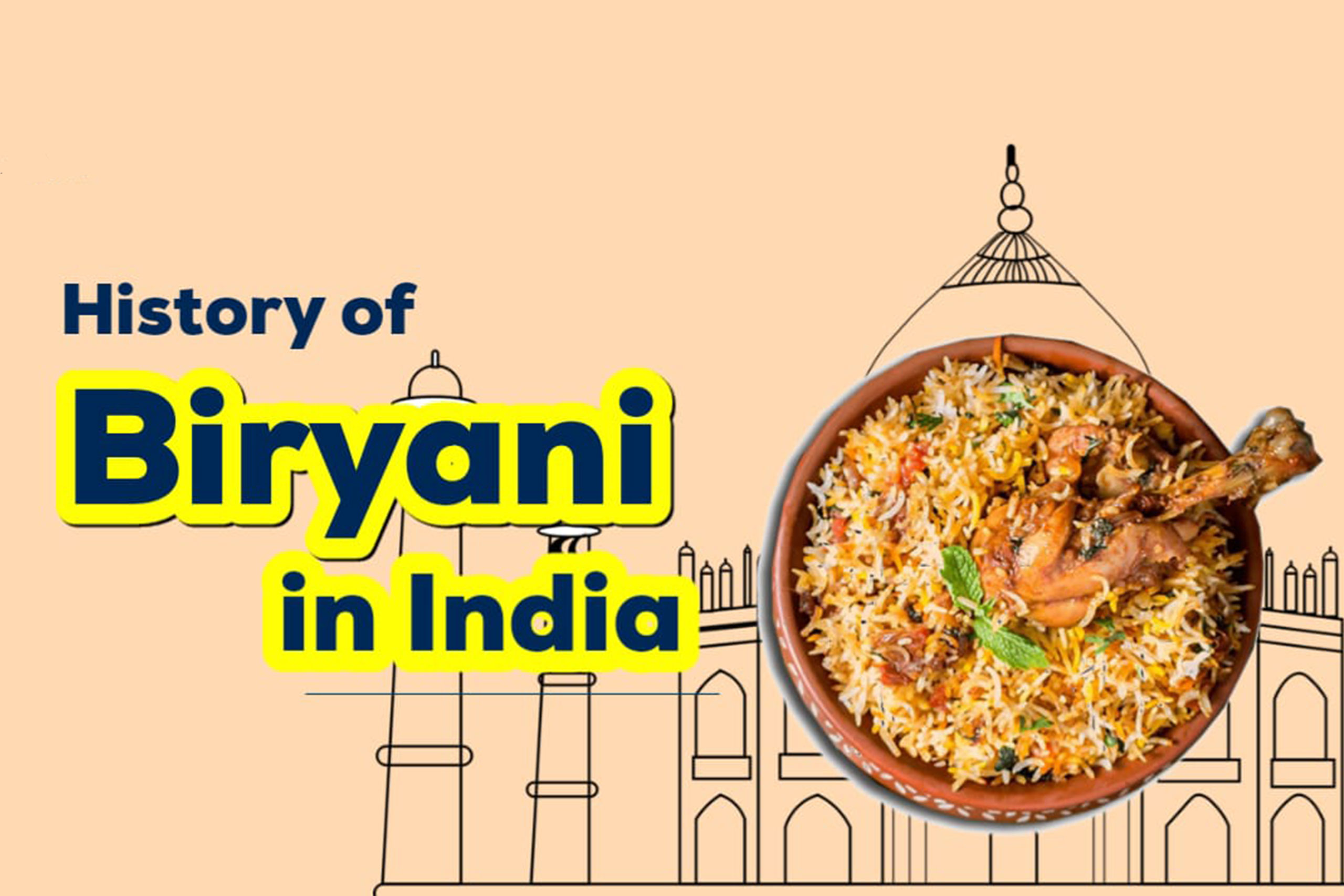The correct history of the birth of biryani in India.

The history of biryani in India
The history of biryani in India is rich and complex, reflecting a blend of culinary influences from various cultures and regions. Here’s a detailed look at the origins and evolution of biryani in India:
Origins of Biryani
**1. Ancient Beginnings:
The roots of biryani can be traced back to ancient times. While rice dishes have been a staple in the Indian subcontinent for millennia, the concept of biryani as we know it today evolved. Early rice dishes with spices and meat have been mentioned in texts from the Vedic period and the Maurya Empire.
**2. The Mughal Influence:
The most significant influence on the biryani we know today came from the Mughal Empire, which ruled India from the early 16th century to the mid-19th century. The Mughal emperors were great patrons of cuisine and brought a rich culinary tradition from Central Asia and Persia.
- Persian Roots: The Mughal emperors introduced the Persian dish pulao (or pilaf), a rice dish cooked with meat, spices, and sometimes dried fruits. The Persian word “biryani” itself is derived from the Persian word biryani, which means “fried” or “roasted.”
- Evolution in India: The Mughal chefs adapted the Persian pulao to local ingredients and tastes, incorporating Indian spices and herbs. This adaptation created a more complex and flavorful dish, which eventually evolved into biryani.
**3. Regional Variations:
As biryani spread throughout India, it was adapted to regional tastes and ingredients, resulting in several distinct variations:
- Hyderabadi Biryani: One of the most famous regional varieties, developed in the kitchens of the Nizam of Hyderabad. This version is known for its rich flavour and use of yoghurt, saffron, and a unique blend of spices.
- Lucknowi (Awadhi) Biryani: Originating from Lucknow, it is known for its subtle and fragrant flavours. It is traditionally cooked using the dum method, where the dish is slow-cooked to allow flavours to meld.
- Kolkata Biryani: This variation was influenced by the Mughal kitchens and features a slightly sweet flavour with the addition of potatoes and sometimes boiled eggs.
- Southern Variants: In Tamil Nadu and Kerala, biryani takes on a different character using coconut and local spices. The Ambur Biryani from Tamil Nadu and the Thalassery Biryani from Kerala are notable examples.
The Evolution of Biryani
**1. Colonial Period:
During British colonial rule, biryani continued to evolve as it was introduced to different parts of India and adapted to local tastes. The dish became popular among the Indian elite and was served at lavish banquets.
**2. Post-Independence:
After India gained independence in 1947, biryani remained a beloved dish. It continued to evolve, with modern interpretations and fusion dishes becoming popular.
**3. Contemporary Popularity:
In recent decades, biryani has gained immense popularity in India and internationally. Its rich flavour, variety, and ability to be adapted to different dietary preferences have made it a global favourite.
Cultural Significance of Biryani
**1. Festive and Special Occasions:
Biryani is often associated with special occasions and celebrations. It is a dish that signifies festivity, whether it’s a family gathering, a wedding, or a festival.
**2. Symbol of Culinary Heritage:
Biryani represents the rich culinary heritage of India, showcasing the country’s history of trade, migration, and cultural exchange. It symbolises how different influences can create something unique and beloved.
Conclusion
Biryani’s journey from a Persian dish to a staple of Indian cuisine highlights the dynamic nature of food culture and its ability to adapt and flourish through centuries of change. Today, biryani continues to be a beloved dish, celebrated for its rich flavours and cultural significance.
References
- Mughal Cuisine: Various historical sources document the influence of Mughal cuisine on Indian food.
- Regional Cookbooks: Regional variations of biryani are detailed in cookbooks and culinary histories from the respective areas.
- Food History Texts: Books and articles on the history of Indian cuisine provide insights into the evolution of biryani.
Feel free to ask if you want more details on any specific aspect of biryani’s history!
